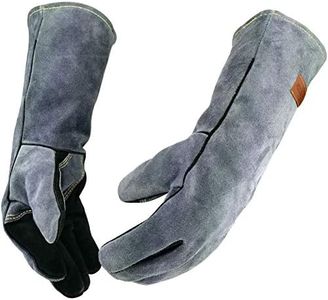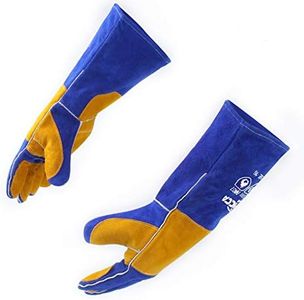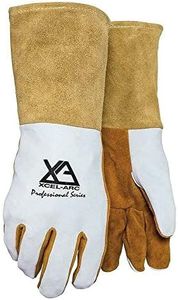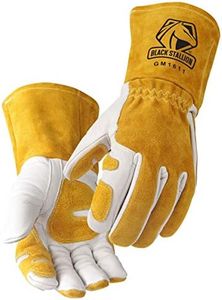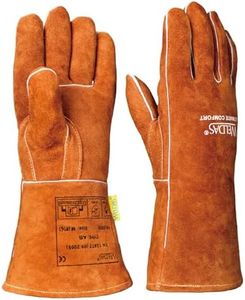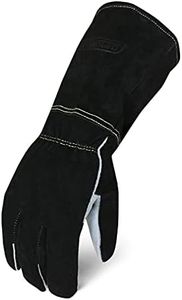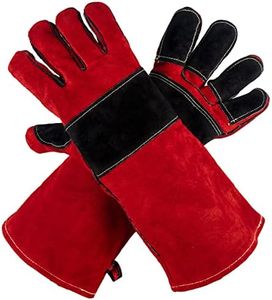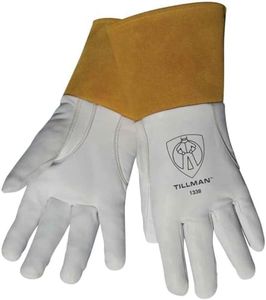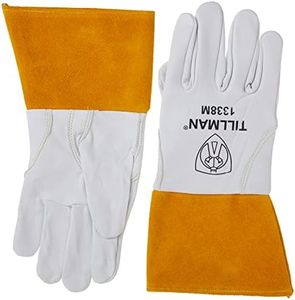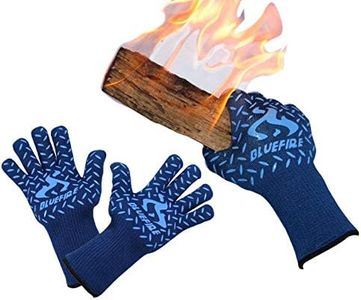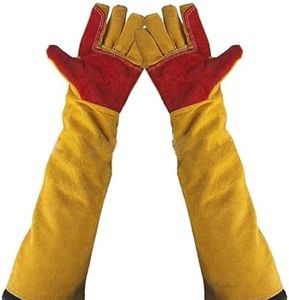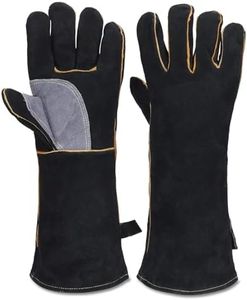We Use CookiesWe use cookies to enhance the security, performance,
functionality and for analytical and promotional activities. By continuing to browse this site you
are agreeing to our privacy policy
10 Best Welding Gloves
From leading brands and best sellers available on the web.Buying Guide for the Best Welding Gloves
Choosing the right welding gloves is important for both comfort and safety while working. Welding gloves protect your hands from heat, sparks, electrical shock, and sharp objects. The right pair should balance protection, dexterity, durability, and comfort, depending on the type of welding you do. To find the best fit, focus on the key features that make gloves more suitable for specific welding tasks and your personal preferences.MaterialThe material of welding gloves affects heat resistance, durability, and flexibility. Common options include leather types like cowhide, pigskin, goatskin, and deerskin. Cowhide is known for toughness and heat resistance, making it great for heavy welding. Goatskin is softer and more flexible, suitable for lighter welding needing more finger control. Pigskin and deerskin offer a balance between toughness and comfort. The type of welding you do should guide your choice: choose heavier, thicker material for high-heat welding like stick welding, and softer, thinner material for more precise work like TIG welding.
Glove LengthGlove length refers to how far up the arm the gloves extend, and it matters for protecting not just your hands but also your wrists and forearms from sparks and heat. Shorter gloves are lighter and cooler, better for lighter or indoor work, while longer gloves offer more coverage for heavy-duty or outdoor settings. If you’re doing welding that produces a lot of sparks or splatter, go for longer gloves; for delicate, low-spark tasks, shorter gloves can increase flexibility.
Insulation and LiningInsulation and lining refer to the inner layers of the glove, providing heat protection and comfort. Some gloves are lined with materials like cotton or fleece, making them more resistant to high temperatures but possibly less flexible. Unlined gloves tend to allow more dexterity but less heat protection. If your welding tasks generate high heat, especially over long periods, look for well-insulated gloves. For shorter, less intense tasks, unlined or lightly lined gloves may suffice and enhance fine movement.
DexterityDexterity is how easily you can move and control your fingers while wearing the gloves. Some gloves are thick and stiff to maximize protection but sacrifice finger mobility, suited for heavy welding. Others are designed to be more flexible, enabling you to grip and manipulate objects easily. High dexterity is key for tasks that require precision, like TIG welding. If your work requires handling small parts or detailed work, look for gloves that highlight dexterity; for heavy, rough work, prioritize protection over flexibility.
Cuff StyleCuff style determines how easy it is to put on and remove the gloves, how much protection you get around the wrist, and sometimes even how secure the gloves feel. Common cuff styles include safety cuffs, gauntlet cuffs, and knit cuffs. Gauntlet cuffs are longer and provide more forearm protection. Safety cuffs are shorter and easier to slide off in case of emergency. Knit cuffs are snug and offer a bit more softness but less protection from heat. Choose based on the level of protection needed and your comfort preference.
Stitching and ReinforcementStitching and reinforcement refer to how the gloves are assembled and whether there are extra protective layers or sewn areas. Strong, heat-resistant thread (like Kevlar) ensures that seams hold up to heat and wear. Look for gloves with reinforced palms and fingers if you expect to handle rough materials or tools often. For basic tasks, standard stitching is fine, but for frequent or demanding use, extra reinforcement helps the gloves last longer and keeps you safer.
Fit and SizeGetting the right fit and size is essential for both safety and comfort. Gloves that are too big may slip or reduce control, while tight gloves can restrict movement or circulation. Many gloves come in multiple sizes or as a “one size fits most.” To pick the right pair, try them on if possible, or measure your hand according to manufacturer guidelines. Choose gloves that allow you to move your fingers freely without being loose or tight, as this ensures safety and reduces fatigue.
